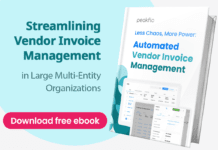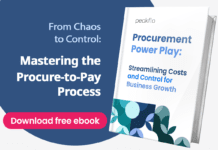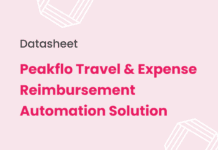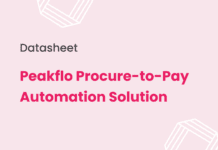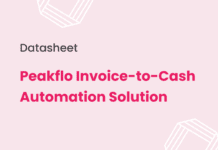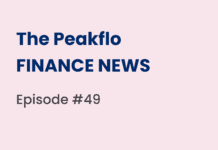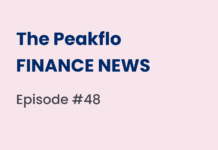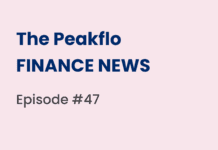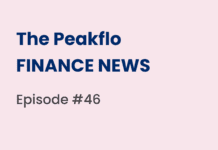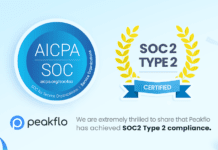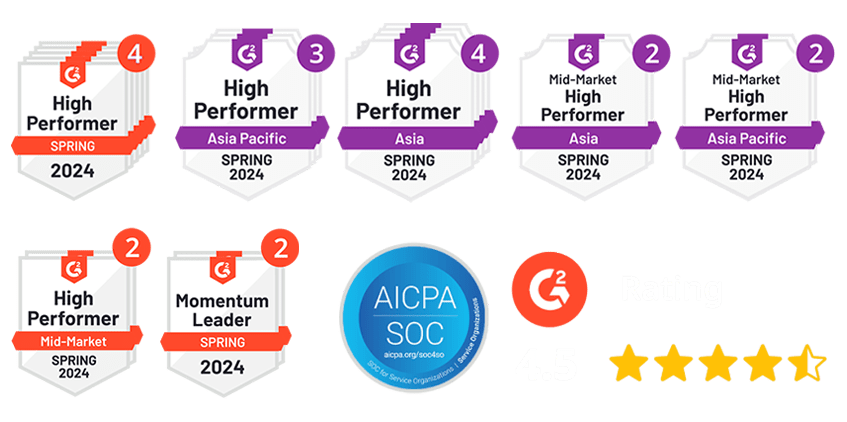It is easy to ignore the small expenses—those one-off charges or unplanned purchases you barely notice. But when these miscellaneous expenses add up, they can quietly throw your budget off track. From surprise shipping fees to forgotten software subscriptions, these costs can cause more problems than you think.
Left unmanaged, they make financial reports messy and tax season even more stressful. However, understanding and managing miscellaneous expenses does not have to feel like a chore. With a clear strategy, you can track, categorize, and control these costs to protect your bottom line and avoid last-minute headaches.
In this guide, we will break it down step by step, so you can stay on top of every expense without the guesswork.
Understanding Miscellaneous Expenses
Miscellaneous expenses are those little costs that do not fit neatly into your usual budget categories. They are often small, unplanned, and easy to forget—until they add up. For businesses in Singapore, these could include last-minute office supplies, delivery charges, or even small tokens of appreciation for your team. In personal budgets, they might show up as unplanned cab fares, extra parking fees, or small app subscriptions.
The tricky part? These business expenses might not seem like a big deal individually, but they can quietly eat into your finances over time. If you are not paying attention, they can throw off your financial reports and make tax season more complicated than it needs to be.
So, what makes miscellaneous expenses different?
- They are uncategorized: These costs do not belong in standard categories like rent or utilities.
- They are often irregular: You do not see them every month, making them harder to predict.
- They are small but frequent: Individually, they seem minor, but they can snowball if left unchecked.
Understanding these expenses is not just about keeping your books in order. It is about staying in control of your money and avoiding unnecessary stress. With a simple system to track and manage expenses, you will find it easier to stay on top of your finances, whether running a business or managing your budget.
Importance of Tracking Miscellaneous Expenses
Tracking miscellaneous expenses is more than just good practice—it is a smart way to stay in control of your money. In Singapore, where costs can add up quickly, untracked small expenses can quietly derail your financial plans.
Here is why it matters:
- Keeps your financial records accurate
Miscellaneous expenses may be small, but if ignored, they can throw off your reports. For businesses, this means budgets that do not reflect reality. For individuals, it can lead to overspending without realizing where the money went.
- Makes tax season easier
Some of these expenses might qualify for tax deductions in Singapore, but if you do not track them, you could miss out. Having everything documented saves time and stress when filing your taxes is time.
- Helps you budget better
When you track every cost—even the small ones—you see where your money is going. This makes it easier to budget for things like vendor purchases or unexpected charges, so you are never caught off guard.
- Cuts out unnecessary spending
It is easy to forget about recurring app subscriptions or delivery surcharges. Tracking these costs helps you identify wasteful spending and make better financial decisions.
- Gives you peace of mind
Knowing you have accounted for every dollar helps you stay confident about your finances. Whether running a business or managing your household, tracking your miscellaneous expenses gives you the full picture.
Examples of Miscellaneous Expenses
Miscellaneous expenses cover a range of small, irregular costs that do not fit into standard budget categories. Here Is a breakdown of common examples relevant to businesses in Singapore, designed to help your finance team manage them better:
- Marketing and promotional items
Think branded tote bags for events, customized calendars for clients, or a last-minute boost for a Facebook ad. These costs often pop up during campaigns or trade shows but do not always make it into detailed budget plans.
- Minor repairs and maintenance
Whether it Is a quick plumbing fix or repairing an office chair, minor upkeep expenses can not be ignored. In Singapore’s humid weather, regular aircon servicing or mold prevention treatments might also fall under this category.
- Travel and hospitality incidental costs
Grabbing a taxi to meet a customer, tipping at a business dinner, or paying for extra luggage on a work trip are common examples. These small travel costs often do not fit into broader travel budgets but can add up over time.
- Training and educational resources
Purchasing an online course for the team, attending a single-day workshop, or downloading a paid e-book on Singapore’s employment laws can all qualify as miscellaneous training expenses. These costs are not always recurring but are necessary for staying up to date.
- Office supplies and maintenance
From printer cartridges to whiteboard markers, small purchases like these are typical in any office. In Singapore, extras like dehumidifiers or anti-mold sprays might also count as minor but essential office expenses.
- Technology and software-related expenses
Upgrading to premium Zoom features for an important client call or paying for additional cloud storage can fall into this category. These are often small, unplanned tech costs that keep operations running smoothly.
- Communication and utility costs
Extra phone data charges, international call fees, or one-off increases in electricity usage may not happen regularly but can sneak into your monthly bills. For businesses in Singapore with regional operations, such expenses can be more frequent.
- Miscellaneous employee perks
Celebrating an employee’s birthday, giving out gift cards during the Lunar New Year, or reimbursing a team lunch are perks that build a positive work environment. These occasional costs often go unnoticed but are an important part of office culture.
Managing Miscellaneous Expenses
Miscellaneous expenses can seem small, but they add up fast. If you are not paying attention, they can mess up your budget and cause stress when it is time to file taxes. The good news? With the right approach, you can manage business expenses without a headache. Here is how:
- Plan ahead
Start by creating a budget category for unexpected expenses. Label it “miscellaneous” to cover costs like repairs, last-minute purchases, or surprise fees. This way, your main budget will not take the hit when these expenses come up.
Do not stop there! Check this category regularly to see if it fits your current spending habits. Businesses grow and change, and your budget should keep up. Updating it often will keep it realistic and useful.
- Stay organized
Track every expense, even the smallest ones. A $5 parking fee or an extra delivery charge might not seem like much. But when you add them all up, they can make a big difference. Keeping detailed records helps you see where your money is going and prepares you for tax season.
Use apps or software to make tracking easier. These tools save time and keep everything in one place. You will avoid misplaced receipts and have a clear view of your spending.
- Use technology to your advantage
Expense-tracking tools can do a lot of the work for you. Many of them log and categorize expenses automatically. This reduces mistakes and saves you time.
Choose expense management tools that let you monitor your spending in real-time. When you see where your money is going as it happens, it is easier to make smart financial decisions. You will also catch unusual expenses before they get out of control.
- Review and adjust
Set time aside to review your expenses. Look for patterns, like costs that keep coming up or spikes in spending. Are there areas where you can save? Could you negotiate better deals with vendors? Use what you learn to adjust your budget. A budget that reflects your actual spending is a budget that works.
- Teach your team
If you have employees, include them in the process. Explain why managing expenses matters and show them how to do it. Simple tools or brief training sessions can help them track costs more effectively. A team that understands expense management will help keep your finances in good shape.
How to Control Your Miscellaneous Expenses with Peakflo?
Managing small, unexpected expenses can be tricky. These costs often pile up without notice, creating budget problems and confusion. Peakflo simplifies expense management with tools that help you track, organize, and control spending. Here is how Peakflo can help you manage miscellaneous expenses more effectively.
- Track and organize all expenses in one place
It is easy to lose track of small expenses like receipts, reimbursements, or unexpected purchases. Peakflo lets you record all your expenses in one system, making it simple to organize and review your spending.
Key features:
- Use AI-powered scanning to capture receipt details automatically.
- Employees can upload expenses or enter details manually when receipts are not available.
- Combine unreported expenses into a single expense report with one click.
These tools ensure that every expense is accounted for, no matter how small. This helps avoid errors and ensures accurate financial records.
- Create clear rules for spending
When employees are not sure what counts as an approved expense, costs can spiral out of control. Peakflo helps you create specific policies to guide spending and prevent misunderstandings.
Key tools:
- Define clear categories for expenses like travel, meals, or office supplies.
- Sync Peakflo with your accounting software for consistent record-keeping.
- Set limits for currency conversions to control international spending.
For example, if your team travels to different cities in Southeast Asia, you can set daily allowances for each location. This ensures fair and consistent reimbursements while keeping spending under control.
- Make approvals faster and easier
Approvals can delay expense management, especially when processes are manual. Peakflo speeds up approvals with automated workflows. Each request is routed to the right person based on your company’s rules.
How it works:
- Set rules for expense categories or department heads to guide approvals.
- Use fallback approvers to handle requests when someone is unavailable.
- Approve or reject requests instantly via email, Slack, or WhatsApp.
These features save time and prevent delays, helping your team stay productive and focused.
- Gain better control and visibility
Miscellaneous expenses often slip through the cracks. Peakflo helps you monitor these costs in real-time, giving you full control over your finances.
What makes it effective:
- Anomaly detection flags duplicate claims, unusual amounts, or out-of-policy spending.
- A centralized dashboard shows all expense reports and approvals in one place.
- Perform bulk approvals or rejections to save time on repetitive tasks.
With these tools, you will always know where your money is going and can act quickly to address any issues.
- Simplify travel expenses
Travel costs can make up a big part of your miscellaneous expenses. Peakflo automates travel requests and approvals to reduce manual work and prevent errors.
Key features:
- Employees can submit customized travel requests with all necessary details.
- Upload receipts for individual items like airfare or hotels.
- Validate travel requests against company policies to flag issues before approval.
These features help your team manage travel expenses without the hassle of paper forms or spreadsheets.
- Prevent errors and fraud
Errors or fraudulent claims can add unnecessary costs to your business. Peakflo’s AI tools help prevent these problems by identifying issues early.
How it works:
- Flag duplicate claims or out-of-policy expenses automatically.
- Match receipts to expense reports using two-way verification.
- Detect unusual spending patterns with real-time anomaly alerts.
By catching mistakes or fraud before they escalate, Peakflo protects your budget and ensures accuracy.
Conclusion
Keeping track of miscellaneous expenses can feel overwhelming, but it does not have to be. Peakflo takes the hassle out of expense management, giving you the tools to track spending, set clear policies, and approve requests quickly and easily. From real-time alerts to automated workflows, Peakflo makes it simple to stay on top of your finances and avoid budget surprises.
Whether you are handling travel expenses, reimbursements, or one-off purchases, Peakflo helps you manage it all with precision and ease. It is the smarter way to control costs and keep your business finances on track.
Want to see how Peakflo works? Take a demo tour today and experience how Peakflo can simplify your expense management and give you complete financial control.

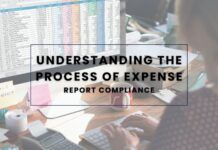







![Why AI Sales Calls Are Making Good Sales Reps Even Better [2025 Guide] ai sales calls](https://cdn-kmjmp.nitrocdn.com/YvtqmrsiHUxqerlSiZgbfzqqTARWTElr/assets/images/optimized/rev-a4aafe3/blog.peakflo.co/wp-content/uploads/2025/09/65168cf6-3001-4733-8cbc-12d5684cf449-218x150.webp)







